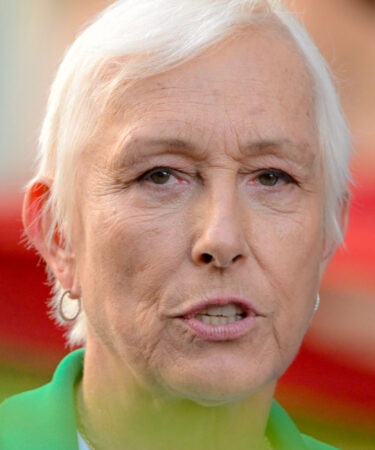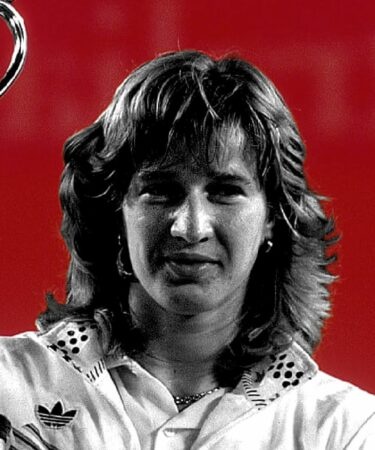November 23, 1986: The day Martina Navratilova set an all-time record by winning the WTA Finals for the eighth time
Every day Tennis Majors takes you back in time to celebrate a great moment in tennis history. Today, we go back to 1986 to witness how Martina Navratilova, the undisputed world No 1, defeated her rising rival, 17-year-old Steffi Graf, to claim her eighth WTA year-end crown
 Navratilova, OTD
Navratilova, OTD
What exactly happened on that day?
On this day, November 23, 1986, Martina Navratilova won the WTA year-end championships for a record eighth time, and a fifth consecutive time. To achieve the feat, Navratilova, who had occupied the world No 1 spot with little interruption since 1982, beat ascendant Steffi Graf, a 17-year-old German, who would go on to achieve the calendar Grand Slam only two years later (7-6, 6-3, 6-2).
It was the eighth triumph of the Czechoslovakian-born left-hander at the year-end championships, a record that remains unchallenged to date.
The players involved: Martina Navratilova and Steffi Graf
- Martina Navratilova: 18-time Grand Slam singles champion
In November 1986, Martina Navratilova, born in 1956, was world No 1. She took fitness to a new level in women’s tennis, introducing the idea of cross-training, and playing other sports such as basketball in order to improve her physical condition.
She reached the top spot for the first time in 1978, after she claimed her first Grand Slam title at Wimbledon, defeating Evert in the final (2-6, 6-4, 7-5). She successfully defended her crown at the All England Club in 1979, and in 1981, she triumphed for the first time at the Australian Open, defeating Evert in the final both times.
In those years, she battled for the world No 1 spot with Evert and Tracy Austin, but from 1982, Navratilova took a stranglehold on the tour. That year, she completed the career Grand Slam by lifting the trophy at both Roland-Garros (defeating Andrea Jaeger, 7-6, 6-1) and Wimbledon (defeating Evert, 6-1, 3-6, 6-2). In 1983, her hold on the tour morphed into a complete domination.
When she arrived at the 1984 Australian Open, Navratilova had won the last six Grand Slam tournaments (from Wimbledon 1983 to the 1984 US Open), which was an all-time record on both men and women’s tour. However, at the Australian Open, she missed the opportunity to achieve a calendar-year Grand Slam.
In 1985, Navratilova lost one of the greatest Roland-Garros finals of all-time, defeated by Chris Evert, 6-3, 6-7, 7-5), whom she defeated a few weeks later in the Wimbledon final (4-6, 6-3, 6-2), claiming her sixth crown in London. She was then defeated in the US Open by Hana Mandlikova (7-6, 1-6, 7-6), but, after having triumphed at the Australian Open in December, she finished the year as the No 1 once again, and she still held that spot at the end of 1986.
That year, Navratilova added two more Grand Slam trophies to her collection, triumphing at Wimbledon and at the US Open – however, at Flushing Meadows, she had to save three match points in the semi-finals, against a teenager named Steffi Graf (6-1, 6-7, 7-6).
- Steffi Graf: the teenage challenger from Germany
Steffi Graf was born in 1969. In 1982, at the age of 13, she became the youngest girl to ever earn a WTA ranking. After winning the demonstration event held at the Los Angeles Olympics 1984, she consistently improved her game and her results, at an alarming rate. Graf reached the semi-final at the 1985 US Open, at the age of 16, defeated by world No 1 Martina Navratilova (6-2, 6-3), after having eliminated the fourth seed, Pam Shriver, in the quarter-finals (7-6, 6-7, 7-6).
In April 1986, Graf was already world No 4 when she claimed the first title of her young career, defeating the great Chris Evert in the final of the Family Circle Cup, in Hilton Head (6-4, 7-5).
A few months later, she was only one point away from defeating the almost unbeatable Navratilova in the US Open semi-finals, but, despite three match points, she was finally edged 6-1, 6-7, 7-6. At the end of the year, she was ranked No 3 in the world.
The place: Madison Square Garden, NYC
The WTA Year-End Championships, known as the Virginia Slims Championships, was originally founded in 1972. Its first edition was held in Boca Raton, Florida, and the tournament moved to Los Angeles and Oakland before eventually settling down in New York in 1979. The venue of the event was the famous Madison Square Garden, where 18,000 spectators could be hosted. In 1994, the first 16 players in the world qualified for the Championships, and, unlike in modern days, there was no round robin format. From 1984, it was the only tournament on the women’s tour where the final was played under a best-of-five set format. Martina Navratilova, who was the four-time defending champion and had triumphed seven times, held the record of the most titles conquered at the Championships.
The facts: Navratilova wins the best-of-five in straight sets
At the start of the 1986 year-end championships, Martina Navratilova was the undisputed world No 1. Since 1982, she had only allowed her long-time rival Chris Evert occupy the top spot for 10 weeks. In 1984, she was only two matches away from achieving the calendar Grand Slam – and in the same year, she became not only the first player since Margaret Court to hold the four major crowns at the same time, but she also set an amazing record, winning six consecutive Grand Slam tournaments.
In 1986, despite having lost in the Roland-Garros final, she had taken her total of major titles to 15 and had once against set incredible standards: when she entered the court to face Steffi Graf in the final, she was on a 52-match winning streak, holding an 89-3 match record and having won 14 of 17 tournaments in 1986.
In their first five encounters, Graf had only prevailed once, and it was on clay, Navratilova’s least favourite surface. However, at the US Open, the German teenager had pushed the No 1 to her limits, only losing in the third-set tiebreak after having missed three match points.
This time, however, in indoor carpet, at the Madison Square Garden, where Navratilova had already triumphed seven times and was the four-time defending champion, it was a different story. The first set came to a close tiebreak, but after the world No 1 prevailed 8-6, closing the set on an ace, she took control of the match. She took her opponent’s serve early in the second set, and cruised towards an eighth year-end title.
”Once I was up by two sets, I felt comfortable,” Navratilova said, according to The New York Times. ”I played a solid match, nothing spectacular, but no letdowns. This win was fantastic.”
”I’m playing against tougher competition, and that’s what makes it more gratifying,” she added. ”I’ve had to play as good, if not better, than two years ago.”
What next? Martina ends career with 18 singles Grand Slams and Graf with 22
Martina Navratilova would become, according to Billie Jean King, “the greatest singles, doubles, and mixed doubles player who ever lived”. In the Open Era, no male or female player would ever win more singles tournaments than Navratilova (167), doubles events (177), or matches (2,189). At the end of her career, she would hold 18 Grand Slam titles in singles, 31 in doubles and 10 in mixed doubles, completing the career boxed Grand Slam: winning every major tournament in singles, doubles and mixed doubles. She would spend a total of 332 weeks as world No 1, but she would never achieve the calendar-year Grand Slam.
Steffi Graf would have her breakthrough year in 1987, when she would lift her first Grand Slam trophy, edging Navratilova in the final of Roland-Garros (6-4, 4-6, 8-6), and finishing runner-up to the same Navratilova at Wimbledon and at the US Open. On August 17, she would even take the top WTA seat from the American, who had held it with little interruption since 1982.
In 1988, she would achieve one of the most remarkable achievements in tennis history: the Golden Grand Slam. The German would not only triumph in all four Grand Slam tournaments, but she would claim the 1988 Olympic Gold medal in singles on top of that – the Golden Slam!
She would hold the No 1 WTA ranking spot without an interruption until she was eventually overtaken by Monica Seles in 1991. After Seles’s stabbing in 1993, Graf would recover the top spot until 1997, setting a new record of 377 weeks spent as world No 1. By winning the 1995 US Open, she would become the only woman to win each of the four Grand Slam titles at least four times. When she retired, in 1999, soon after claiming her last major crown in Roland-Garros, Graf had won the amazing total of 22 Grand Slam tournaments.













